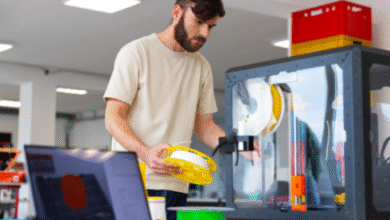Installing a dehumidifier in a basement is a great way to control moisture levels and prevent issues like mold and mildew. Here are the steps to install a dehumidifier in a basement:
Materials You’ll Need:
- Dehumidifier unit
- Electrical outlet (if not already available)
- Extension cord (if needed)
- Drain hose (optional)
- Level
- Screwdriver
- Pliers
- Hose clamp (if using a drain hose)
Steps:
- Select the Location:
- Choose a location in your basement for the dehumidifier. It should be near a power source and ideally positioned in a central area to maximize its effectiveness. Keep it away from walls or obstructions that could block airflow.
- Check the Electrical Supply:
- Ensure there is a nearby electrical outlet that can handle the dehumidifier’s power requirements. Dehumidifiers typically require a standard 120-volt outlet. If one is not available, consider having an electrician install an outlet.
- Prepare the Drain Option (if desired):
- Decide if you want to use the dehumidifier’s built-in water collection container or use a continuous drain option. If you choose the latter, you’ll need a drain hose and a suitable floor drain or sump pump. Make sure the drain hose is long enough to reach the drain.
- Position the Dehumidifier:
- Place the dehumidifier on a level surface in the chosen location. Use a level to ensure it is perfectly level, as this will help with proper operation and prevent water spillage.
- Connect the Drain Hose (if using):
- If you’re using a drain hose, connect one end to the dehumidifier’s drainage port. Use a hose clamp to secure it in place. Position the other end of the hose over the floor drain or into the sump pump.
- Plug In the Dehumidifier:
- Plug the dehumidifier into the nearby electrical outlet. If you’re using an extension cord, ensure it can handle the dehumidifier’s power requirements and is properly rated for indoor use.
- Set the Desired Humidity Level:
- Adjust the dehumidifier’s settings to your desired humidity level. Most units have a built-in hygrometer to measure humidity levels and can be set to maintain a specific percentage.
- Enable Continuous Operation (if needed):
- If you want the dehumidifier to run continuously, look for a “continuous” or “constant” mode on the control panel and activate it.
- Test the Dehumidifier:
- Turn on the dehumidifier and let it run for a while to ensure it’s working correctly. Check that it is collecting moisture and that the drain hose (if used) is functioning as intended.
- Monitor and Maintain:
- Regularly monitor the dehumidifier’s water collection container (if used) and empty it when full. Clean or replace the unit’s air filter as needed to maintain efficiency.
- Periodic Maintenance:
- Clean the dehumidifier’s coils and other internal components as per the manufacturer’s recommendations. This will help maintain its efficiency.
- Adjust Settings as Needed:
- Depending on the season and weather, you may need to adjust the dehumidifier’s settings to maintain the desired humidity level in your basement.
By following these steps, you can install a dehumidifier in your basement to effectively control moisture levels and create a more comfortable and healthy living environment. Be sure to consult the manufacturer’s instructions specific to your dehumidifier model for any additional guidance or tips.
Also Read:
https://infusionpost.com/how-to-install-gutters-on-a-mobile-home/
https://infusionpost.com/how-to-install-gutters-on-metal-roof/
https://infusionpost.com/how-to-install-hurricane-fabric/



